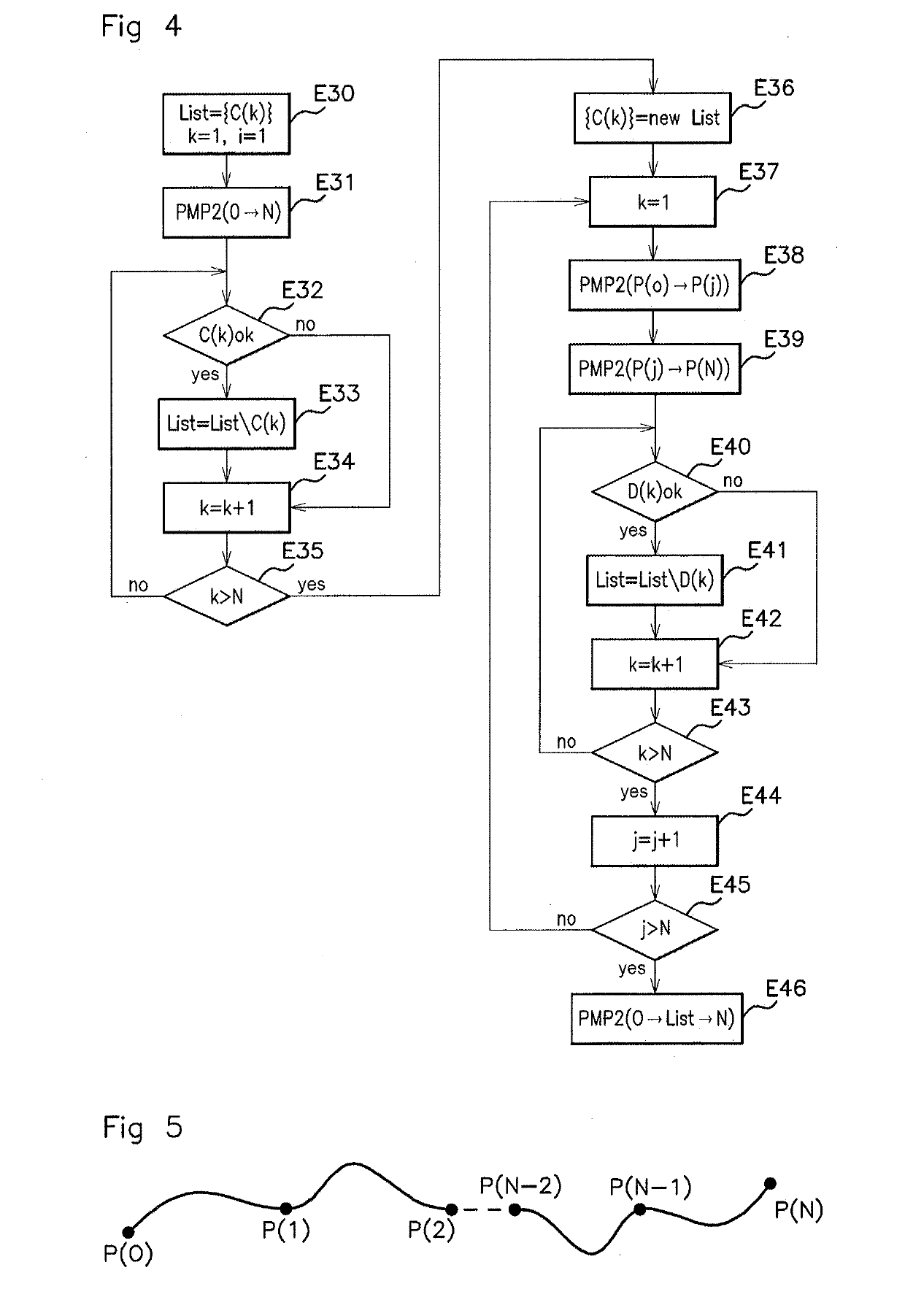Method for determining a motor vehicle speed profile
a technology for speed profiles and motor vehicles, applied in wave based measurement systems, instruments, data processing applications, etc., can solve problems such as inability to perform real-time calculations with an on-board computer, calculations may prove to be particularly long or even complex, and achieve simple, reliable and effective solutions.
- Summary
- Abstract
- Description
- Claims
- Application Information
AI Technical Summary
Benefits of technology
Problems solved by technology
Method used
Image
Examples
first example (fig.3)
First Example (FIG. 3)
[0079]Starting from the starting point P(i=0) with k=1 (step E10), the algorithm PMP1 is first of all applied (step E11) between P(i) and P(k), and it is then checked that the speed thus calculated at the point P(k) satisfies the predetermined speed constraint C(k) at this point (step E12).
[0080]If not, we move to step E15 described below.
[0081]If so, the value of k is incremented by one unit (step E13) and it is checked whether k=N (step E14).
[0082]If there is a negative result in step E14, we return to step E11 in order to apply the algorithm PMP1 between i=0 and k, and then steps E12 to E14 are resumed.
[0083]If step E14 is affirmative, we move to step E15.
[0084]Steps E11 to E14 are thus performed for various values of k (i.e. various points P(k) of the route) until k=N or a speed constraint is not satisfied at one of the points P(k).
[0085]Starting from the point P(i), there are therefore k−i points that satisfy the constraints from C(i) to C(k) by applying P...
second example (fig.4)
Second Example (FIG. 4)
[0096]A list of the predetermined speed constraints C(k) is defined (k being between 1 and N), and then we first of all set k=1 and i=1 (step E30), and then PMP2 is applied between the starting point P(0) and the arrival point P(N) in a step E31.
[0097]It is then checked whether the speed constraint C(k) at the current point k is complied with (step E32).
[0098]If not, we move to step E34.
[0099]If so, the constraint C(k) is removed from the list of constraints (step E33), and then we move to step E34.
[0100]In step E34, the value of k is incremented by one unit, and then we move to a step E35, in which it is checked whether k is strictly greater than N.
[0101]If not, the method is resumed at step E32 with the current value of k.
[0102]If so, we move to a step E36, in which a new list of constraints D(k) is defined (k being a natural integer between 1 and N), comprising only the speed constraints that have not been complied with in step E32, in the order of the note...
PUM
 Login to View More
Login to View More Abstract
Description
Claims
Application Information
 Login to View More
Login to View More - R&D
- Intellectual Property
- Life Sciences
- Materials
- Tech Scout
- Unparalleled Data Quality
- Higher Quality Content
- 60% Fewer Hallucinations
Browse by: Latest US Patents, China's latest patents, Technical Efficacy Thesaurus, Application Domain, Technology Topic, Popular Technical Reports.
© 2025 PatSnap. All rights reserved.Legal|Privacy policy|Modern Slavery Act Transparency Statement|Sitemap|About US| Contact US: help@patsnap.com



